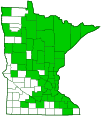Common Puffball
(Lycoperdon perlatum)
Conservation • Description • Habitat • Ecology • Distribution • Taxonomy
|
|
||||||||||||||
Description |
Common Puffball is a very common, very widespread, easily recognized mushroom. It has a worldwide distribution, found on every continent including Antarctica. It may be the most abundant woodland puffball in North America, though in Minnesota Pear-shaped Puffball is more common. It grows on the ground in deciduous, coniferous, and mixed woodlands under trees, on roadsides, in open areas, and even in urban areas. It is usually found in clusters, though it is sometimes alone, scattered, or close together but not clustered. It obtains its nutrients from decaying organic matter (saprobic). The fruiting body is 1¼″ to 3¾″ tall or taller and 1″ to 2¾″ wide or wider. It is shaped like an upside-down pear, with a broad, round or flattened top and a narrowed stem-like base. It is white and is densely covered with small, white, cone-shaped spines and more numerous tiny, white spines and granules between them. The spines are easily rubbed off and as the puffball matures they turn brown and fall off. The large spines leave conspicuous pockmarks. As the puffball ages, the outer scarred layer turns yellowish-brown and sloughs away, exposing a smooth, dark brown inner layer. A raised pore forms on the top of the maturing puffball. When ripe the pore ruptures, exposing the spore mass. Pores are disbursed through the opening by wind, rain drops, falling twigs, and curious hikers. The base is sterile, thick, chambered, and often wrinkled. It is white and spongy when young, turning yellow then olive then brown as it ages. The flesh (spore mass) is white and firm when young, becoming soft and first yellow then olive-brown. When ripe, the spore mass is dry, powdery, and brown. It is edible when firm and white but is bland and may be bitter. |
Similar Species |
Pear-shaped Puffball (Apioperdon pyriforme) is similar in appearance, but it grows on wood, not on the ground. |
Habitat and Hosts |
Deciduous, coniferous, and mixed woodlands, fields and other grassy areas, roadsides, and urban areas |
Ecology |
Season |
July to November |
Distribution |
||
|
Sources |
|
| 6/22/2024 | ||
Occurrence |
||
Very widespread and very common |
||
Taxonomy |
|
Kingdom |
Fungi (Fungi) |
Subkingdom |
Dikarya |
Phylum |
Basidiomycota (Basidiomycete Fungi) |
Subphylum |
Agaricomycotina (Higher Basidiomycetes) |
Class |
Agaricomycetes (Mushrooms, Bracket Fungi, Puffballs, and Allies) |
Subclass |
Agaricomycetidae |
Order |
|
Suborder |
Suborder Agaricineae |
Family |
Lycoperdaceae (puffballs) |
Genus |
Lycoperdon |
Order Family Genus |
|
Subordinate Taxa |
|
|
|
Synonyms |
|
Lycoperdon bonordenii Lycoperdon gemmatum Lycoperdon perlatum var. bonordenii |
|
Common Names |
|
Common Puffball Devil’s Snuffbox Gem-studded Puffball Wolf-fart Puffball |
|
Glossary
Saprobic
A term often used for saprotrophic fungi. Referring to fungi that obtain their nutrients from decayed organic matter.
Visitor Photos |
||
Share your photo of this fungus. |
||
This button not working for you? |
||
Paul |
||
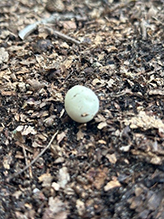 |
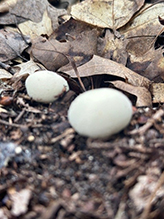 |
|
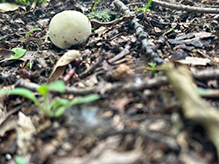 |
||
Tim O’Keefe |
||
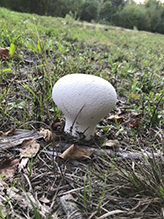 |
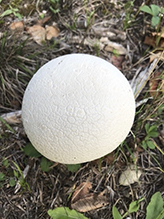 |
|
Luciearl |
||
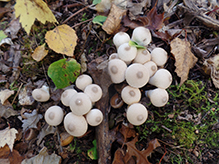 |
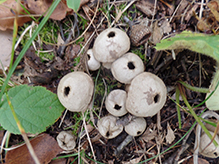 |
|
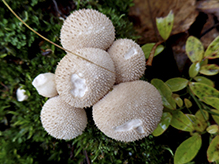 |
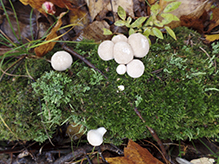 |
|
Jill Jacobson |
||
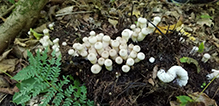 |
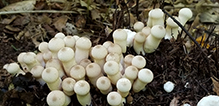 |
|
… a group of beautiful puff balls … |
||
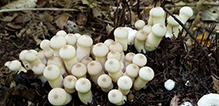 |
||
MinnesotaSeasons.com Photos |
||

Slideshows |
|

Visitor Videos |
||
Share your video of this fungus. |
||
This button not working for you? |
||
|
Other Videos |
||
Lycoperdon Perlatum AKA Gem Studded PuffBall Mushroom |
About
Published on Jun 18, 2018 If you would like to support my channel donations are welcome https://paypal.me/WaltRevenJr Also please click the like button, it helps my channel and dont forget to subscribe. ANOTHER VIDEO I FORGOT TO MAKE PUBLIC! July 2017, spores arent the spiked parts like I said(my knowledge has increased since this video) they are actually inside this mushroom! Found off the bike path in hardwood trees, there was a bunch of these neat things growing all over the place! |

Visitor Sightings |
||
Report a sighting of this fungus. |
||
This button not working for you? |
||
| Tim O’Keefe 9/10/2021 |
Location: Becker County |
Luciearl |
Location: Cass County |
 |
Luciearl |
Location: Cass County |
 |
Jill Jacobson |
Location: Detroit Lakes, MN … a group of beautiful puff balls … |
| Luciearl 10/25/2018 |
Location: Cass County |
MinnesotaSeasons.com Sightings |
||
|

Created: 11/2/2018 Last Updated: © MinnesotaSeasons.com. All rights reserved. |
